As Taiwan, officially known as Republic of China, celebrants its ‘Double Ten’ National Day on 10 October, there is gnawing anxiety of its existential survival since Chiang Kai-shek, its founding father, broke away from the mainland to proclaim People’s Republic of China (ROC) in 1949 after the protracted civil war. It has been avowed objective of Chinese leadership starting from Mao Zedong to President Xi Jinping to complete the national unification with Taiwan. But for US support, China would have got Taiwan back long ago. The US was supportive of the nationalist Kuomintang (KMT) Party opposed to the Communist Party of China, born in 1921. Taiwan continued to be the member of the United Nations till 1971 with the US support.
However sensing China’s rise and anticipating democratisation, the US started recalibrating its strategic posture towards China in early 1970s. In a path breaking development, President Nixon accompanied by his advisor Dr Henry Kissinger visited Beijing in February 1971. Ahead of the visit, the People’s Republic of China was admitted in the United Nations unseating Taiwan at the behest of USA in October 1970. The historic Shanghai Communique, a prelude to subsequent US recognition of China, was signed between the USA and China during Nixon’s visit to China. The Shanghai Communique recognised the Chinese position that the People’s Republic of China was the sole legal government of the People’s Republic of China and that China is the province of China that had been returned to the motherland.
Strategic Ambiguity
Notwithstanding the legislative enactments and executive measures in defence of Taiwan by the US government, the debate surrounding strategic ambiguity has acquired much traction in recent years, particularly after the visit of the then Speaker of US House of Representative Nancy Pelosi’s Taiwan visit in August 2022. There have been questions as to what extent the USA would go to defend Taiwan in case of a Chinese attack. Careful scrutiny of the documents starting from Shanghai Communique to the more recent legislative and executive measures of the US administrations amply demonstrates US commitment to defend Taiwan in the event of an invasion by China. In the past, the US has demonstrated its commitment to Taiwan in the Taiwan Strait Crises during the Korean War in mid 1950s and also in 1995-96. Michael Turton, who has been living in Taiwan for more than three decades, opines that under the policy of strategic ambiguity, as is conventionally described, the US has refrained from saying whether it would defend Taiwan and under what conditions it would intervene. Although this uncertainty is a deterrent to Chinese action, the Chinese have never behaved as if it were a deterrent. Instead, they have always behaved as if they need to expand their military to fight off the US. In fact, strategic ambiguity, some argue, has impelled China to conclude that the US won’t intervene, tempting Beijing to invade Taiwan and force the US to back down without a fight. It also suggests that they could test the policy by taking an island or two. [1] He argues that strategic ambiguity has ‘worked’ because until recently China never had the power to challenge it in any way. If your enemy is helpless before your military might, any policy you adopt will appear successful. In yet another column he pleads, “It is time for the USA to clearly state its policy to the global and American public…Washington’s officialdom needs to clearly state the US position that it does not recognize China’s claim to Taiwan and then constantly repeat that. The use of the word ‘acknowledge’ to represent Washington’s position must cease. Not only is it dangerously misleading, it also makes Washington look weak
and confused
.” [2]
The need for greater clarity and shedding strategic ambiguity was also emphasized by Bob Menendez, the chairman of the Senate Foreign Relations Committee of US in an op-ed in the New York Times. He wrote, “The United States and our partners in the international community need to do the same to develop and put up in place a new and more resilient strategy for Taiwan while there is still time… Accordingly, the United States needs less ambiguity to guide our approach to Taiwan. In today’s world- with Mr. Xi’s China-a robust and credible deterrence to preserve peace and stability across Taiwan Strait requires clarity in word and deed…” [3]
Biden’s Nuanced Approach: Balancing without Containment
It is evident that even if there is bipartisan support in the US Congress, there is some hiatus between the White House and the Congress which can be attributed to the fact that the executive has to bear the brunt and as such has to act with restraint and prudence. The response of the executive to the Taiwan issue can be gauged through the prism of what Ashley Tellis wrote in his essay earlier “Balancing without Containment: An American strategy for managing China” [4] which entails a comprehensive approach, not supply of arms alone, but also trade and technology.
The sales of defensive arms by the US to Taiwan have been a sticking point between US and China. Beijing’s continuous belligerence and threats to Taiwan’s security and sovereignty have been the rationale behind the US decision to continue the supply of arms to Taiwan. It merits mentioning that the cessation of arms sales to Taiwan by the US has been contingent upon the peaceful resolution of the Taiwan issue by China and Taiwan and is also subject to peace and stability in the region. Although the USA has not declared in any public document that it would defend Taiwan if attacked by China, the terms and conditions of arms sales to Taiwan clearly vindicate US security commitments to Taiwan in case of an invasion or attack. In the latest arms deal, the USA is providing US$1.1 worth of arms to Taiwan in the backdrop of China’s heightened belligerence after the visit of Nancy Pelosi to Taiwan. The arms deals include 60 AGM-1 Harpoon Block11 missiles, four ATM-84L-I Harpoon 11 Block11 exercise missiles, 100 AIM-9X Block11 Sidewinder tactical missiles, and a surveillance radar contract extension.
The linkage between arms sales and Taiwan’s threat perception from China was articulated by White House National Security Council Coordinator for Strategic Communications John Kirby. He said, the package reflects the US’ “assessment of Taiwan’s self-defence needs in a modern sense and the threat that they are under, and the threats being posed by the PRC.” He further said, “Watching what the PRC did during and in the wake of Pelosi’s visit only reinforces our view that these items will obviously help Taiwan better defend itself.” The US Lieutenant General Clinton Hinote, the US Air Force deputy chief of staff, strategy, integration, and requirements said that the US is prepared to attack “the full depth” of China’s logistics should Beijing invade Taiwan. Elucidating further he said, “I would hope that our potential adversary China might think about that if they are complaining of the difficulty of crossing a 90-mile (145km) strait and going against Taiwan… we are not just going to let their logistics flow…we are going to do everything we can stop it and make that one of the most difficult military operations in history.” [5]
Bolstering Trade
Taiwan-US 21st Century Trade Initiative launched in 2022 is indeed a major effort to mitigate the impact of China’s sanctions on Taiwan which have somewhat affected its domestic economy. As it was not possible to include Taiwan in the US-led Indo-Pacific Economic Framework, the Trade Initiative is a good alternative to facilitate economic engagement between the US and Taiwan. The initiative, launched in June this year, seeks to facilitate discussions leading to a trade agreement between Taiwan and the USA with topics ranging from best practices to facilitate trade, digital trade, efforts to fight corruption, small and medium enterprises, environmental protection, and nonmarket economies. The Trade Initiative demonstrates that Taiwan holds strategic heft for Taiwan. In fact, the US- Taiwan fact sheet updated on 27th May this year mentions that “As a leading democracy and a technological powerhouse, Taiwan is a key US partner in the Indo-Pacific.”
The Game Changer: The Chips Act
The passage of the Chips and Science Act in 2022 by Congress and its assent by President Joe Biden is yet another major act on part of the USA to give impetus to the semiconductor industry in Taiwan. China had lobbied against the semiconductor bill. The Chinese embassy in Washington had firmly opposed the bill calling it reminiscent of a “cold war” mentality. Many US lawmakers had said that they would normally not support the hefty subsidies for private business but noted that China and the EU had been awarding billions of dollars to their chip companies. [6] The Act set aside US$52 billion to subsidize US semiconductor companies and provides tax breaks for companies investing in semiconductors. The US has also proposed a four-nation alliance of chip manufacturing with Taiwan, Japan, and South Korea called Chip 4 widely regarded as an effort to control semiconductor exports and technology outflows to prevent China from obtaining high-end technology from these countries. The US recently issued a ban on electronic design automation software, which the Chinese semiconductor industry has generally said was aimed at preventing China from advancing to a 3-nanometer process and limiting all IC design capacity to 5 manometers and manufacturing capacity at 7 nanometres. [7] The subsidized companies would not be allowed to invest in Chinese semiconductor manufacturing processes more advanced than 28 manometers for the next decade. It is believed that Taiwan’s proposal to cooperate on supply chain security was made with its needs in mind. Although Taiwan is strong in semiconductor foundries.
Assault on Taiwan is an assault on democracy. As the Taiwan issue continues to be ‘non-negotiable’, the status quo seems to be the best bet. But Taiwan’s nebulous position can affect its present and future prospects. It is high time to mobilize world opinion for Taiwan’s rightful place in the comity of nations including in UN bodies like World Health Assembly (WHA). It is a paradox that more than 23 million people of Taiwan are deprived of their voice in the United Nations. One is reminded of what the then US assistant secretary of state James Kelly said in Congressional testimony on April 21, 2004. He said, “Can the evolution of full-fledged democracy on Taiwan and the clear emergence of a clear sense of Taiwanese identity meld with the principle of ‘One China’, or are they in stark contrast with each other.”
References
[1] Michel Turton, “The Storm over strategic ambiguity’, Taipei Time,30 may, 2022
[2] Unblurring Washington’s stance on Taiwan”, Taipei Times,22 August 2022
[3] Bob Menendez, “This is how the US will stand with Taiwan,” New York Times, 3 August, 2022
[4] Ashley J. Tellis, “Balancing without Containment: An American Strategy for Managing China”, Carnegie Endowment for International Peace
[5] “US to continue arms sales: Spokesman”, Taipei Times, 8 September, 2022
[6] “US Congress passes bill to boost chip production”, Taipei Times,30 July, 2022
[7] Yang Chung-Yueh, “Chips give Taiwan an edge that it needs to use”, Taipei Times, 7 September, 2022
(The paper is the author’s individual scholastic articulation. The author certifies that the article/paper is original in content, unpublished and it has not been submitted for publication/web upload elsewhere, and that the facts and figures quoted are duly referenced, as needed, and are believed to be correct). (The paper does not necessarily represent the organisational stance... More >>
Image Source: https://data1.ibtimes.co.in/en/full/739697/china-taiwan-issue.jpg?h=450&l=50&t=40



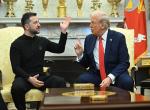

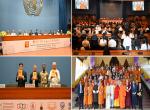
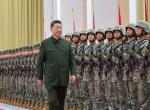
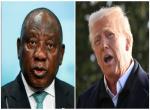


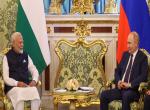
Post new comment